Our interview was wide-ranging, digging into the origins of the project, its continuous evolution, and its ability to appeal to RPG veterans and complete newcomers alike.
Honkai: Star Rail, for those who’ve been living under a cosmic rock, is a sci-fi adventure in which you – the Trailblazer – act as a kind of intergalactic problem solver, embedding yourself in the culture and politics of various different planets.
In addition to spinning a dense – and, occasionally, dizzying – storyline, the release also plays host to a deeply strategic combat system, which rewards preparation and team-building in addition to tactics.
 Image: HoYoverse
Image: HoYoverseAs a live service game, there are multiple layers to unpeel here, ranging from combat through to exploration and minigames.
We wanted to quiz An about as many facets of the gameplay as possible – both those elements we love and others which we appreciate a little less.
His answers were both open and honest, and we hope the conversation gives you deeper insight into what it takes to build an enormous RPG on the scale of Honkai: Star Rail.
Our full discussion follows below, with light editing for readability.
 Image: HoYoverse
Image: HoYoversePush Square: We wanted to talk about the very origins of Honkai: Star Rail. Why did you decide to make a turn-based RPG?
Chengnan An, Lead Game Designer: In my generation, we grew up playing many action games and RPG games and many of those were so much fun. At the time when we first started thinking about Honkai: Star Rail, the company was mostly making action games.
So, it occurred to us with our experience of creating characters and telling good stories, we could actually make a turn-based game. My colleagues and I were interested in those style of games, so we started working on it.
When we were just thinking about creating this project, we studied the gameplay of turn-based games a lot, and it occurred to us that the fun part of turn-based games is actually very different to action games, because before and after combat it takes a lot of planning and strategic decisions on the part of the players.
 Image: HoYoverse
Image: HoYoverseWe thought if we could create a turn-based game, that would be very attractive, and bring more players to the games of our company.
Was there any game in particular that you felt had a big influence on the development of Honkai: Star Rail?
We experienced a lot of different games, and Dragon Quest was one of them. If you know these games really well, you might be able to detect hints of them in our own game.
But what we really wanted to do is to capture the essence of what makes turn-based games fun. So, we didn't borrow heavily from some other games and simply piece them together. We wanted to create our own game that is light and fun to play.
One thing that always interests us about Honkai: Star Rail is that there is more to the game than just the battles. Each environment brings new puzzles and exploration gameplay.
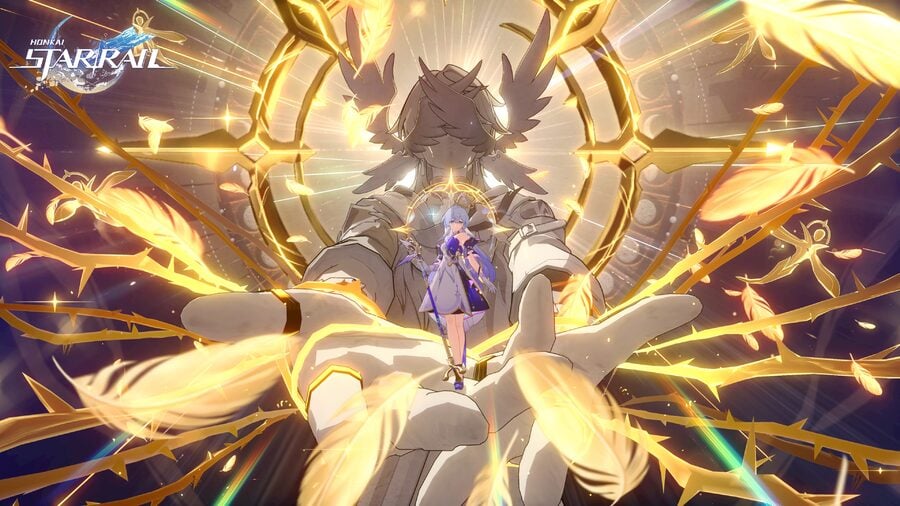 Image: HoYoverse
Image: HoYoverseWe particularly liked the perspective puzzles in Penacony, but obviously you’ve got the time manipulation in Amphoreus now too.
Can you explain how you design some of those elements?
Just like any other artistic creation, games also seek inspiration from previous artistic creations.
For example, the puzzle game on Penacony you mentioned, we were inspired by the Penrose Triangle, which you may come across in other games and movies. For us, it is one of the direct ways to create new experiences for our players.
As for Amphoreus, the change between day and night is actually an integral part for the bigger world view or the storyline of that world. We found that if we incorporate the switch between day and night into the gameplay, it's very enriching.
 Image: HoYoverse
Image: HoYoverseOne other thing we wanted to talk about is the Events in the game. Often these will bring entirely new gameplay concepts to the release.
Personally, we really enjoyed curating the museum in Belobog. That tycoon-style stuff is always fantastic!
Can you talk a little bit about how the gameplay for an Event is designed?
The universe of Honkai: Star Rail is this vast world and we want to bring new experiences for our players, not just around the core combat mechanics.
Some of our players are not as hardcore as the others and they want to have simple fun from our games.
So, we want to cater to that part of the players as well and that's why we add a lot of minigames to the main storyline. We want players to be able to have a lot of fun when they are fully immersed in experiencing the storyline.
 Image: HoYoverse
Image: HoYoverseAnd I would like to add that for a lot of our players, they don't just bury their head in a game and don’t say anything. They engage in very active conversations online.
So, if we can create many minigames that are very fun and make the players want to share the experience with their friends and with other people on the Internet, that attracts more players to our game.
We really liked when you could decorate the Trailblazers room on the Astral Express as well. That was a good one!
But moving on, we wanted to talk a little bit about Amphoreus. This is the biggest storyline you’ve ever done – it’s going to run all year long!
While your focus isn’t necessarily on narrative, we wanted to talk about what’s exciting you about the new location?
The Amphoreus story is going to be very complicated, with a Part 1 and Part 2, each with its own story development and major progression of the storyline.
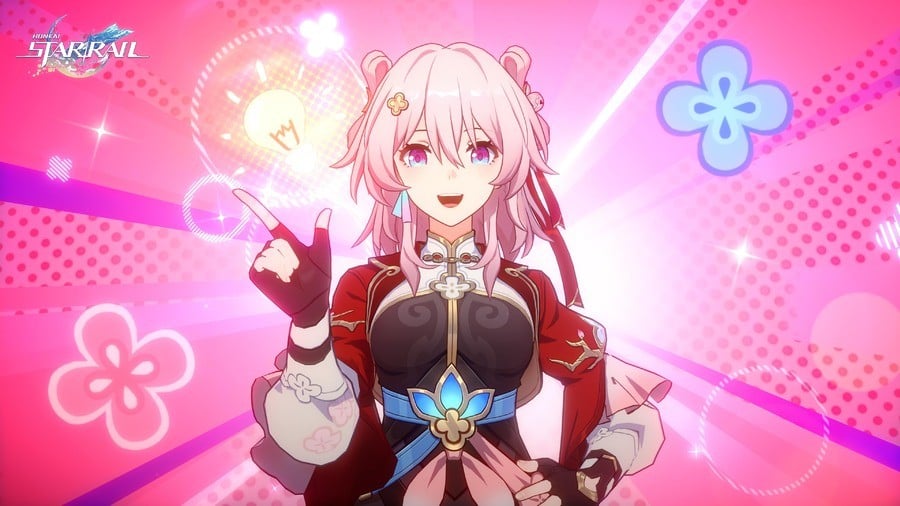 Image: HoYoverse
Image: HoYoverseWe want to focus on two milestones with this new world.
First is the heroic saga theme, namely the Flame Chase Journey. And it also ties back to the main storyline, which is the Trailblaze Mission.
We've done so much prep work into achieving the two milestones, and there's so much to expect from the future updates.
So far, it seems like the stories of Amphoreus are pretty much confined to the world of Amphoreus. So, how do we see Amphoreus connect to the main storyline, which is the Trailblazing Mission? There is a lot to expect from that.
We wanted to talk about the Remembrance path. This path is really interesting because the summons effectively increase the number of characters on the stage.
 Image: HoYoverse
Image: HoYoverseWe’re curious whether you feel this is your solution to adding more party members to combat, or if you ever even considered increasing the number of deployable characters beyond four?
If you have four Remembrance characters in your team, you will have eight characters on the stage if they’re all using their summons.
But the overall concept of Honkai: Star Rail is that we want to create a light-hearted experience, so having eight party members could unnecessarily overcomplicate things.
The Remembrance path brings variety to the combat mechanics, and it creates new room for user expression between the player and their enemies.
We also wanted to talk about the Simulated Universe, or perhaps more specifically the Divergent Universe.
It’s really cool how you’ve been updating this every few months with new rules and entirely new gameplay mechanics.
 Image: HoYoverse
Image: HoYoverseCurrently there’s a “night and day” mechanic in the game. So, we’re curious where the ideas for those systems come from?
When we first started creating Simulated Universe, we wanted to create a place where players could really dive into the combat mechanics.
A lot of the development team were very hardcore roguelike gamers, so that’s why we introduced this mode.
But after releasing it for more than 12 months, we noticed a lot of players starting to lose their sense of excitement when they first encountered this new way of playing.
And that's why in v2.3, we incorporated a new way of playing, the Divergent Universe, which added Equations and changed the way our players collected new Blessings.
In v3.1, we decided to add elements from Amphoreus into the Divergent Universe, namely the day and night mechanics and also the Blessings of the heroes.
 Image: HoYoverse
Image: HoYoverseSo, every step we have very distinct goals to modify the experience so the gameplay feels refreshed.
Would you say the focus is on the Divergent Universe now and the Simulated Universe will just remain as it is?
As of right now, yes, because the Simulated Universe is the story of everything, and throughout the evolution of the Simulated Universe we’ve added multiple updates, a bit like DLC.
So, the experience of Simulated Universe as a whole is constantly evolving and expanding.
Honkai: Star Rail is such a dense game.
We’ve just talked about the Divergent Universe, but we also wanted to talk about the Forgotten Hall, Pure Fiction, and Apocalyptic Shadow – those main game modes which offer recurring rewards with each cycle.
 Image: HoYoverse
Image: HoYoverseEach one feels quite unique and offers a different team-building challenge, which is really cool. Are you satisfied with these three modes now, or are you considering new concepts you could add?
When we first started out, we had one mode and now we have three. So, we’re quite comfortable with how rich the experience is.
But the modes are based on the design and combination of characters at a certain point in time, so as the game has constantly evolved, we’ve felt the need to add new content.
For example, in the second half of last year, we updated Pure Fiction. We want our players to constantly feel challenged during the combat, and of course, have a sense of achievement coming from that.
Sometimes it feels like you’ll release certain combat Events and they seem like they’re almost prototypes for something you're experimenting with gameplay wise. Is that true?
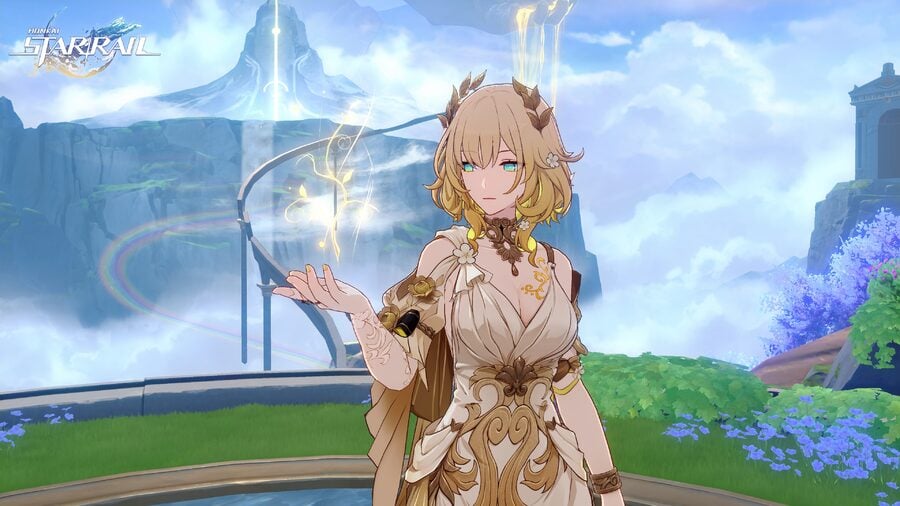 Image: HoYoverse
Image: HoYoverseSo, for some of the system updates, they’ll impact the experience of players for a very long time, so we try to collect as much feedback as we can.
For example, when we released Pure Fiction in v1.5, we actually experimented with combat gameplay in v1.2, where the players can constantly slash new monsters that keep refreshing and get a sense of achievement from the combat gameplay.
That created this anchor and new direction for the game moving forward, so when v1.5 released with Pure Fiction, we were very prepared.
But not every combat Event is created for that reason. Usually, we just release them and see how players feel about them, hoping to offer inspiration for the combat and characters moving forwards.
We feel like we’d get killed by the Honkai: Star Rail community if we don’t ask about character building.
 Image: HoYoverse
Image: HoYoverseSo, often, as a player, fans will have a concept in their mind about what they want to do with a character – like, what kind of Relics or Ornaments they want to use.
But obviously, actually getting the components you need often comes down to chance. We understand there needs to be an element of “work” involved when building characters, but it’s quite frustrating running the same combat scenarios over and over hoping you’ll get what you need.
You’ve obviously added mechanics to mitigate that a little bit, so now you can re-roll some stats.
But we wondered, how do you feel about the “pain” that’s associated with building characters, and whether you have more plans to reduce that or if you’re happy with where you’re at?
With regards to the Relic collecting, this is a challenge we’ve been following and are always trying to address.
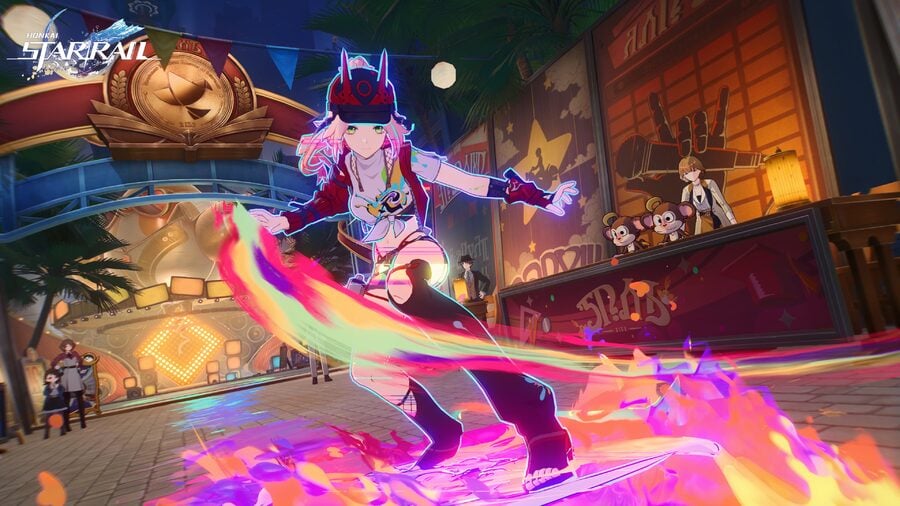 Image: HoYoverse
Image: HoYoverseSo, in v3.0, we released new gameplay that allows the players to be fully aware of the current status of the Relics that they have and where to obtain new Relics. In the future, we will continue to optimise that system.
For example, when a player has a backpack that's already full or almost full, how do we help the players to screen out the Relics that are most helpful to them?
This is something that we'll be working on in the future to help mitigate some of that pain in the process of collecting Relics.
[Editor’s Note: In fact, since this interview was conducted, the v3.2 livestream confirmed a new system that will help recommend Relics you should hold onto before clearing out useless ones, which we’re looking forward to testing.]
Okay, but anything about the specific pain related to the stats you get? Obviously sometimes you get a lot of crap. And it feels like the game is maybe designed in that way to give you a lot of crap.
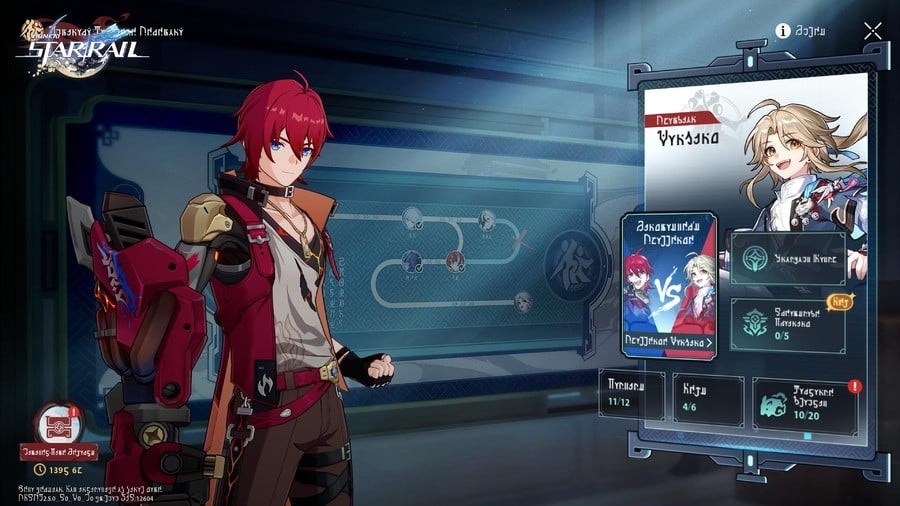 Image: HoYoverse
Image: HoYoverseSo, we’re just curious whether you feel you're in a good place with it, or if you think there's still more to be done with that?
Sometimes it’s not necessarily the act of getting bad Relics that’s so depressing, it’s more about the grinding process. So, how do we make the collecting process easier for the players? It’s something that we’re still brainstorming.
HoYoverse has given millions of players around the world nightmares over the word “defence”!
Just quickly, the Fate crossover that you announced a while ago, it feels like it’s a big deal for the game.
Is there anything you can say about that?
We announced last year that the Fate crossover is going to be sometime during Q3 this year. So, that promise still stands.
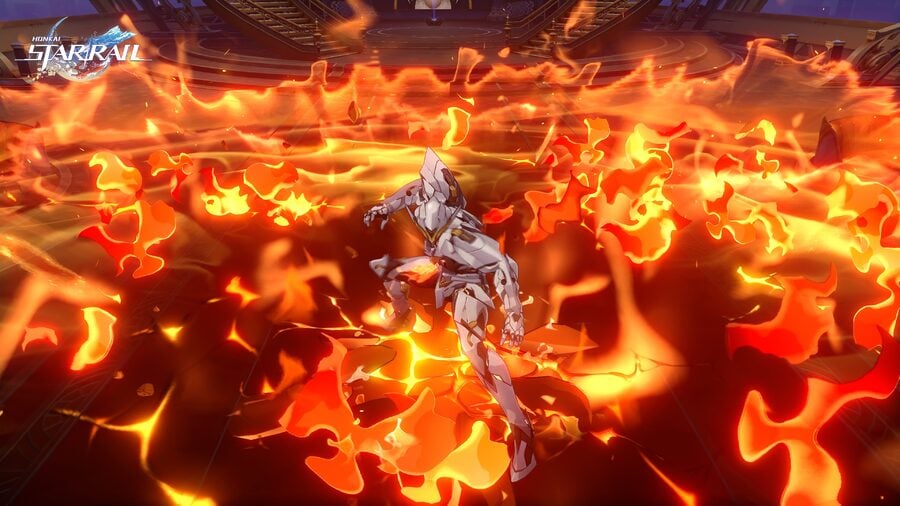 Image: HoYoverse
Image: HoYoverseAnd then, we wondered if there’s anything else you can tease about what’s next for Honkai: Star Rail? Obviously, the second anniversary is coming imminently, so what can we expect from year three?
Currently, it feels like Amphoreus is a very secluded world in itself, but as the story progresses you will realise that it is connected to the larger Trailblazing mission.
Thank you so much!
We’d like to thank Chengnan An and the entire team for making this opportunity possible. For full disclosure, HoYoverse covered the cost of our accommodation and flights to San Francisco.
Are you a Honkai: Star Rail player? Did you find this interview offering insight into the creation of the game interesting? What are you personally hoping for from the game moving forward?
Let us know in the comments section below.
